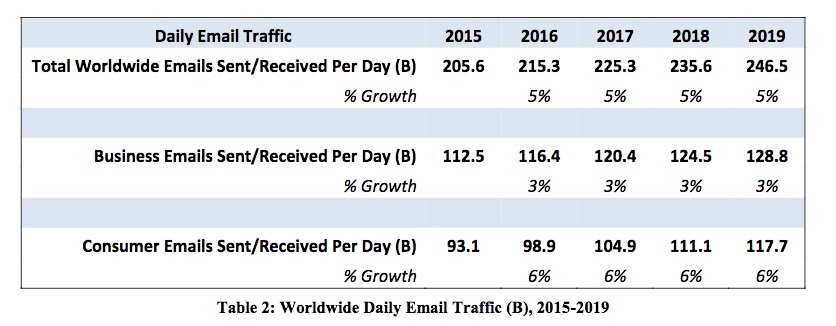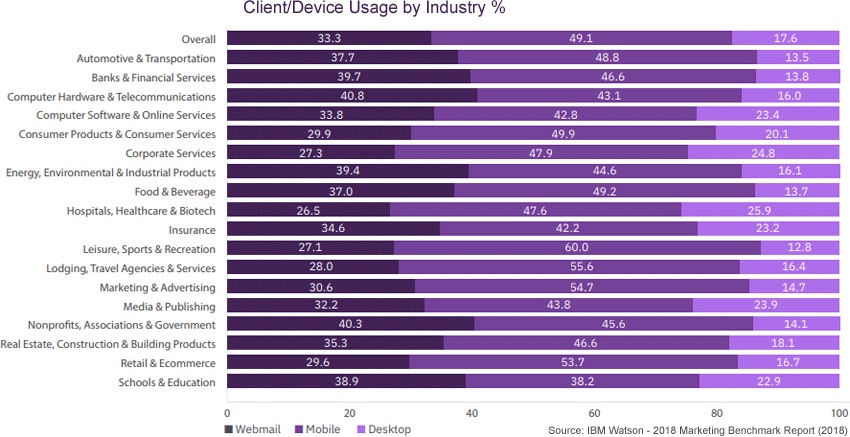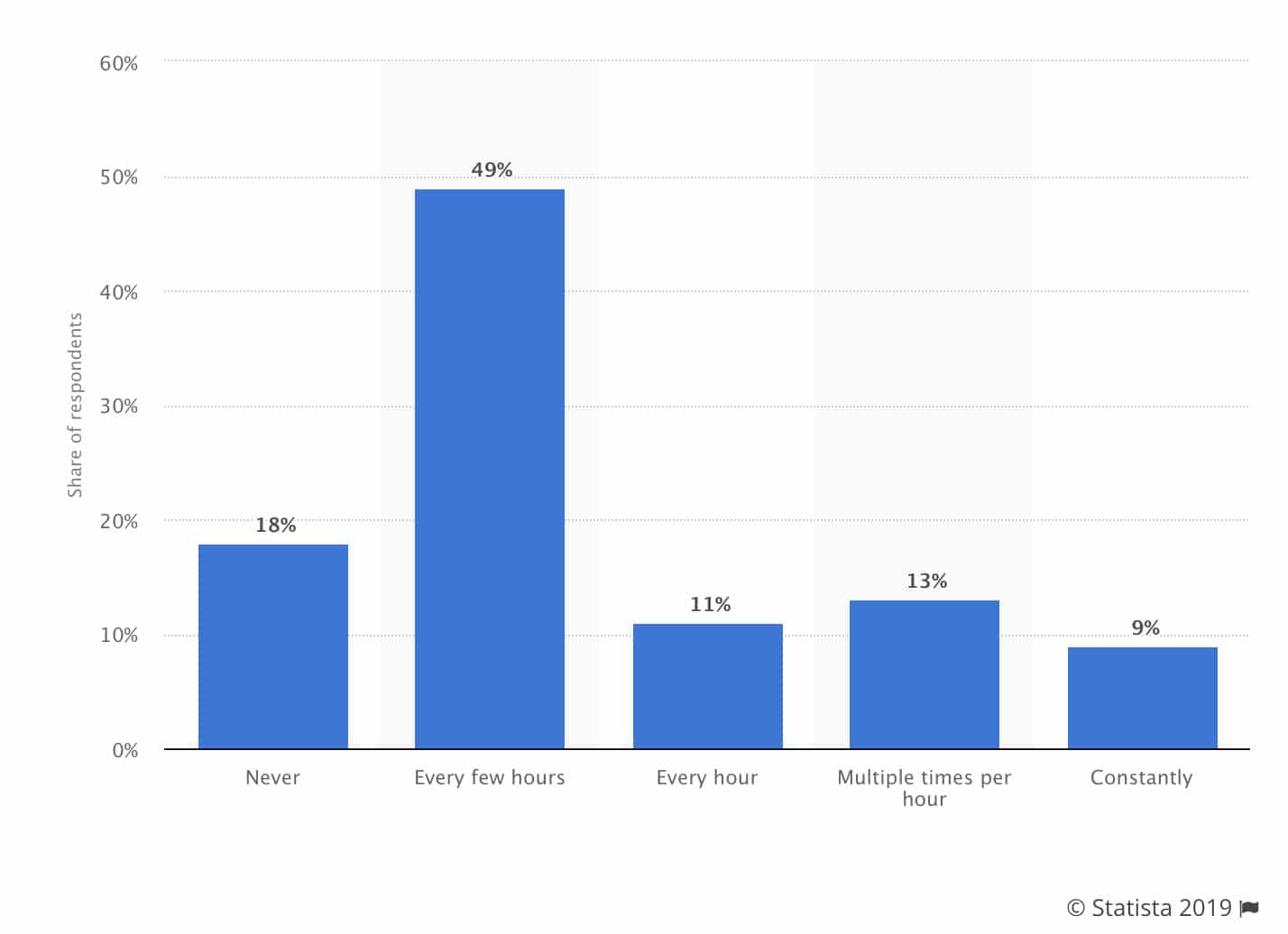Digital marketers have more tools to reach customers than ever before. Not only do we have new platforms and channels to interact with customers and fans, marketers also have access to large amounts of data. This data highlights unique customer trends and usage patterns we might not have noticed previously.
But even with all these new platforms and technology, digital marketers know that some things never change: Statistics show that email is still king.
And we’ve got the numbers to prove it.
These recent email statistics highlight why email marketing is still the best bet for a successful marketing campaign and we’re also sharing key takeaways on how proven email usage should influence marketing campaigns to make them even more successful.
How email statistics and usage have changed over the past five years
Before jumping into the statistics, it’s crucial to understand how email has evolved over the past few years. New technology has made it possible for digital marketers to do more with emails and dl. We’re now seeing more interactive elements as part of everyday campaigns. Marketers are also more aware of the different devices their customers are using to view their messages.
One of the most noticeable trends to note is that statistics show that usage continues to grow each year. According to Statista, email usage is predicted to grow by 2 to 3% each year from 2018 to 2023.
More importantly, businesses are taking notice of this increase and are thus devoting more money to capitalize on it. A study by The Manifest found that 43% of businesses are expected to spend more money on email marketing in 2019.
8 email usage statistics you need to know about
If you’re considering a new email marketing campaign or simply looking to revamp your existing strategy, there are a few critical stats you need to understand that can help shape your initiatives.
Here are eight email statistics and usage trends that illustrate how important email should be to your digital marketing as well as reveal where marketers can be doing better.
1. There are 3.9 billion active email users. (Radicati)
More than half of the global population now uses email. Radicati released updated figures early in 2019 that shows the total number of active email users has jumped to 3.9 billion. This represents accounts that have been assessed over the past three months, so there are likely many more accounts that exist but aren’t frequented.
Just as a comparison, there are 3.5 billion social media users worldwide. The number of social users is impressive, but it’s still fewer users than the number of email accounts.
If you’re looking for greater penetration into your marketplace, email is a great place to start.
2. American workers will receive an average of 126 emails a day. (Radicati)
It’s been widely reported over the past few years that the average worker receives 121 emails each day. However, updated figures in another Radicati report now estimate that number will be closer to 126 by the end of 2019.
The report also highlights two other interesting facts. First, it’s predicted that 246.5 billion emails will be sent each day in 2019. Second, daily email traffic has increased by 5% each year from 2015 to 2019.
Source: Radicati
Marketers should pay attention to this increase because inboxes are becoming more saturated so they’ll need to take extra steps to make their messages stand out.
3. Nearly 60 billion junk emails will be sent each day in the next 4 years. (Spam Laws)
While it’s been getting better globally, spam remains a nuisance for consumers. In addition to reporting the expected total number of spam emails sent each day, Spam Laws also revealed that more than half of people surveyed still feel junk emails are a significant problem.
Internet Service Providers (ISPs) are taking notice and implementing stricter spam filters to keep their users’ inboxes clean. Marketers need to understand how these filters work to ensure their messages don’t end up in the junk folder or bounce.
4. Up to 60% of email opens will occur on mobile devices, depending on the industry. (IBM)
It’s no surprise that the number of emails opened on mobile devices now make up a large chunk of overall engagement. However, what might be a surprise is how this number varies depending on the industry.
IBM’s 2018 Marketing Benchmark Report found that about half of all opens occur on mobile devices. This number jumps to as much as 60% for the “Leisure, Sports & Recreation” industries and is as low as 38.2% for “Schools & Education.”
Source: IBM
The main takeaway here is that regardless of industry, a large portion of your audience is viewing emails on mobile devices. Marketers need to keep this usage in mind when creating their campaigns and should build mobile-first or responsive designs for their emails.
5. 82% of workers check email outside of normal business hours. (Statista)
Possibly connected to the increase in mobile opens and as a result of being more connected than ever, more than four out of five workers admit they check their email outside of normal business hours.
Source: Statista
Another interesting takeaway here is that one-third of employees say they check their business emails at least once an hour, even when they aren’t working. For marketers, this email statistic shows that customers may be willing to read your emails even if they aren’t sent at common times.
It’s common practice to send emails during typical business hours. However, if customers are still checking their emails, there might be less competition for attention when sending during off times. In fact, some studies show that weekends have the best open and click rates.
6. 87% of marketers use email campaigns to nurture their audiences. (CMI)
The majority of marketers who successfully lead nurture utilize email campaigns. Content Marketing Institute’s 2019 B2B Content Marketing Research reveals that almost 90% of marketers use this strategy. However, the same research finds that only 58% say their efforts have been successful.
7. Half of marketers feel their email campaigns are very poor to average. (Smart Insights)
Perhaps a reason less than 60% of marketers say their campaigns are successful is that half of companies feel their efforts are very poor to average. This shows that marketers aren’t happy with the results of their campaigns.
In some cases, there might not be much wrong with the physical emails themselves. The strategy might just need to be reviewed. These marketers should look at a few of the following best practices to improve their performance:
- Segmentation: Make sure contact lists are grouped into similar categories based on demographics, activity, purchase history, etc. Doing this allows you to send more targeted and relevant messages.
- Personalization: Even though similar emails are sent to multiple people, you can make each message seem individualized by adding personalization and dynamic content
- A/B testing: Constantly review what’s working and what isn’t with your campaigns. Tinker with subject lines, CTA buttons, graphics, copy, etc. to optimize emails for your audience.
- Adding videos to emails can increase click-through rates by 300%. (Martech Advisor)
Videos are one of the most popular interactive elements that marketers can use today. In many cases, you’ll see videos embedded on landing pages or in social media posts, but you can also use videos to increase engagement in emails.
In most instances, video helps add more information about your product or service. Martech Advisor suggests an animation to highlight key points as a simple way to incorporate video into your emails. However, you can also use it to add humor, like this example from Wistia.
Source: Really Good Emails
Videos don’t need to be elaborate to improve engagement. A simple GIF might have the same impact as a 30-second explainer.
Wrap up
You now know the email statistics, so now what? If you dig into the stats and usage facts, there are a few important takeaways:
- More emails are being sent than ever before
- More people are opening their emails on mobile devices and, therefore, are more connected than ever
- Most marketers are using email campaigns, but only half are happy with how well they’re performing
- Interactive content causes email metrics to surge
From here, you have a blueprint of what you need to be successful in creating your email campaigns. You should create content that’s relevant and stands out from the crowd.
You should also build mobile-friendly campaigns and evaluate email marketing best practices to ensure your campaigns will be successful.
Once you fully understand the email statistics about usage and digital marketing efforts, you can develop strategies with a greater chance of success.
Are you ready to improve your digital marketing with compelling emails and landing pages? Build your free email template today to engage with your customers and nurture your leads.









